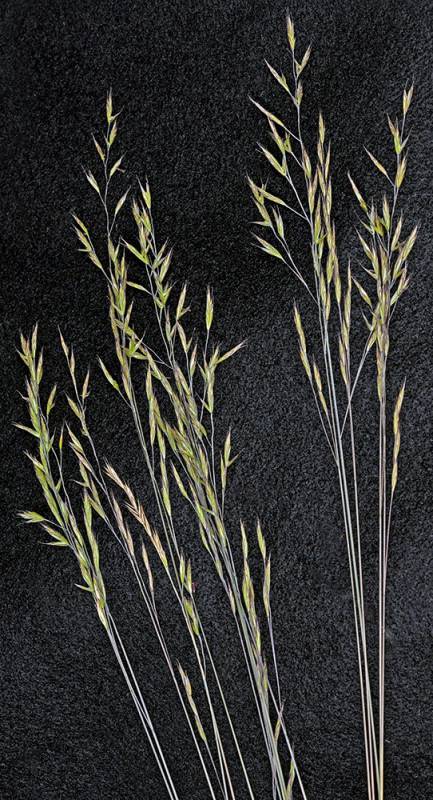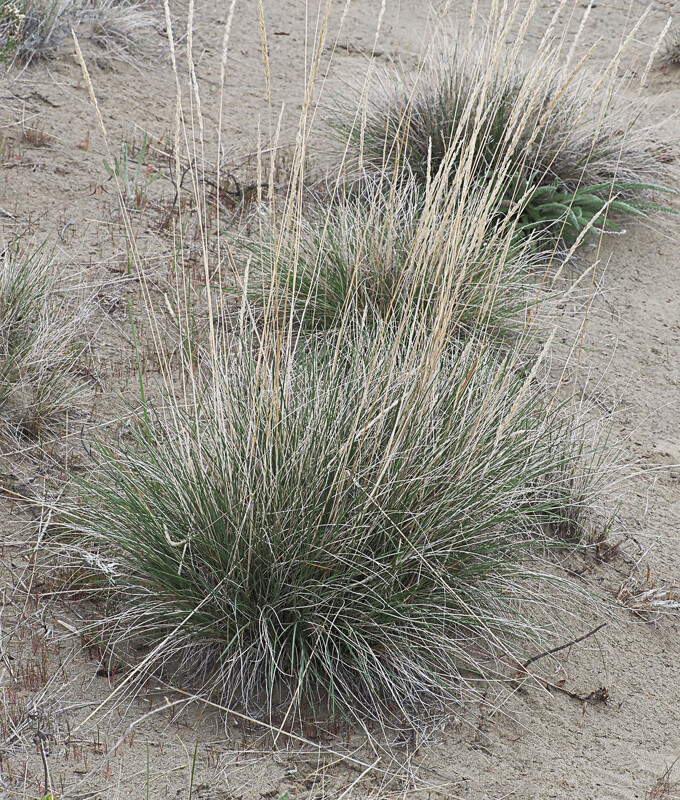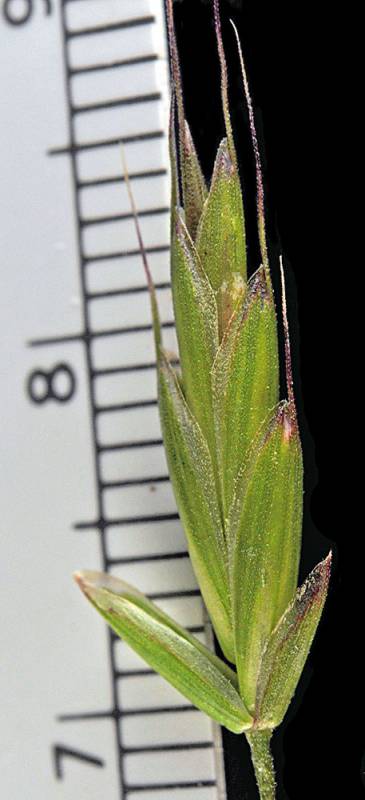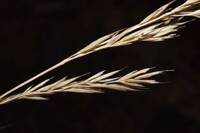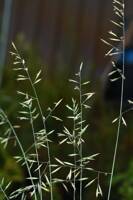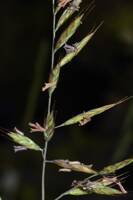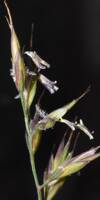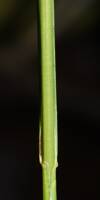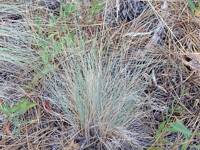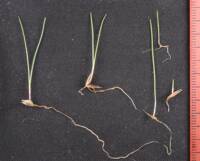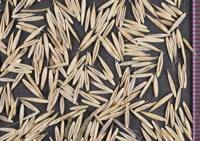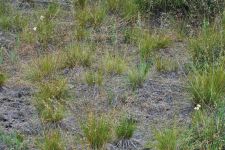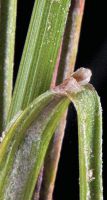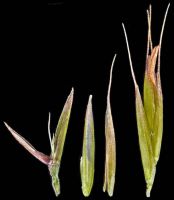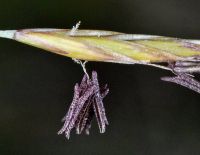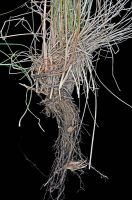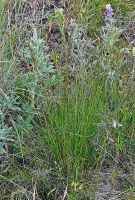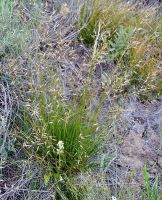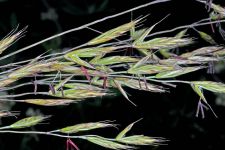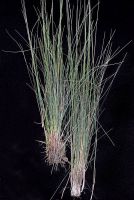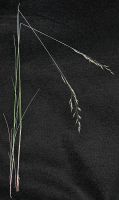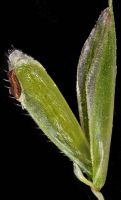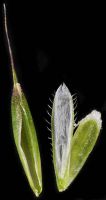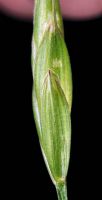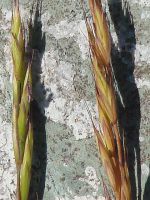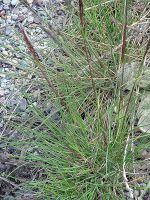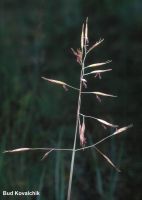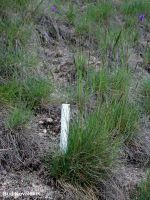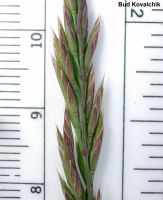Distribution: Occurring chiefly east of the Cascades crest in Washington; British Columbia to California, east to the Rocky Mountains and northern Great Plains.
Habitat: Grasslands and sagebrush desert to dry mountain slopes, occasionally to the subalpine.
Flowers: May-July
Origin: Native
Growth Duration: Perennial
Conservation Status: Not of concern
Pollination: Wind
Strongly tufted perennial, usually glabrous, the hollow culms 4-10 dm. tall.
Sheaths open, usually glabrous; ligules 0.3-0.6 mm. long, highest on the sides; blades mostly basal, filiform, folded-involute, up to 10 cm. long.
Inflorescence a narrow panicle 7-15 cm. long, the branches erect to ascending; spikelets 5- to 7-flowered; first glume narrowly lanceolate, about 3.5 mm. long, 1-nerved; second glume oblong-lanceolate, about 5 mm. long, 3-nerved; lemmas rounded, about 6.5 mm. long, with a stout awn 2-5 mm. long; palea equal to the lemma.
Publication: Bot. Gaz. 36(1): 53. 1903.
Festuca idahoensis Elmer var. oregona (Hack. ex Beal) C.L. Hitchc. [HC]
Festuca ingrata (Hack. ex Beal) Rydb.
Festuca occidentalis Hook. var. ingrata (Hack. ex Beal) B. Boivin
Festuca occidentalis Hook. var. oregona (Hack. ex Beal) B. Boivin
Festuca ovina L. var. columbiana Beal
Festuca ovina L. var. ingrata Hack. ex Beal
Festuca ovina L. var. oregona Hack. ex Beal
PNW Herbaria: Specimen records of Festuca idahoensis in the Consortium of Pacific Northwest Herbaria database
WA Flora Checklist: Festuca idahoensis checklist entry
OregonFlora: Festuca idahoensis information
E-Flora BC: Festuca idahoensis atlas page
CalPhotos: Festuca idahoensis photos

